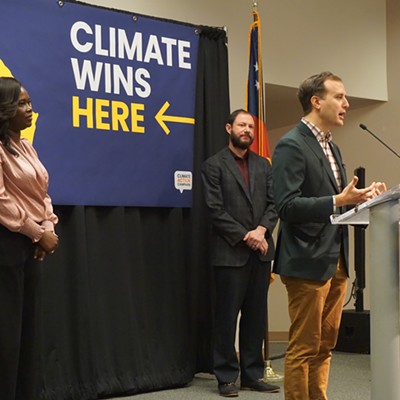AS A longtime coastal property-owner and environmental advocate, I believe it’s important that the public understands the consequences of pursuing cheaper flood insurance in these times of greater risk, primarily attributable to climate disruption.
The Federal flood insurance program began decades ago, when flooding events were considered “acts of God” – natural phenomena that could randomly disrupt the lives of unwary property-owners suffering storm damage. By reducing the costs of insurance, government subsidies limited catastrophic financial impacts caused by property losses.
But now we face a world where it is well-known that human activities are substantially increasing the risk of flooding through climate-altering emission of greenhouse gases (GHGs), and the most hazardous areas can be identified using scientific methods.
By making it “cheaper” to occupy areas where risks of flooding are significant and growing, more costly damage would be encouraged at the taxpayers’ expense. As sea-level continues to rise and storm intensity grows due to human-caused climate disruption, low-cost flood insurance will irresponsibly contribute to ever-greater, yet avoidable, financial disasters.
There are already examples of FEMA insurance payouts being used to rebuild the same properties repeatedly, despite their obviously high risk – resulting in millions in tax-payer dollars being squandered on a single property valued at a few hundred-thousand dollars.
Self-limiting policy restrictions and political maneuvers make FEMA increasingly unreliable for people in harm’s way, as climate disruption causes rising sea-level.
First, under FEMA rules, flood risks and related mapping can only be based on historic flooding events, so science-based predictions of increasing risks are foolishly prohibited from consideration.
Second, anecdotal reports reveal that FEMA is vulnerable to political manipulation, resulting in maps and corresponding insurance costs being altered – despite flooding history and risks – to serve the interests of influential property owners who seek to reduce their costs in occupying hazardous areas. This unfairly shifts expenses of the politically-connected onto other taxpayers.
Examples of disruptive political influences that undermine the purpose and functions of federal and state flood prevention efforts are outline in an academic paper by a professor of public policy at Syracuse University.
A report by the Natural Resources Defense Council and the Sabin Center for Climate Change Law at Columbia University as well findings of the Homeland Security Inspector General make recommendations for improving national flood-protection and remediation policies – focusing on better prevention through community-development requirements and specific mandatory public information warning about the risks of buying flood-prone properties.
Useful as these recommendations may be, they still dodge the critically important need to respond to accumulating factual evidence of rising sea-level and its obvious implications for flooding, especially in coastal areas. We strongly believe that it is imperative that officially determined flood risks must include a direct link to rates of sea-level rise, both historic and scientifically forecasted.
Predictions of sea-level rise, based on well-known indicators such as glacier melt and ambient temperatures affecting the volume of land-based ice added to the world’s oceans, must be continually updated and used to enhance flooding risk-analysis.
Not only will this harshly honest, fact-based, acknowledgement of the climate-change connection to flooding hazards make responses to these risks more timely, equitable, and proportionate, but it will motivate citizens, consumers, and voters to take the issue more seriously.
The fact is that sea-level predictions have substantially risen as more data has been gathered, yet our flooding policies fail to apply these highly relevant and troubling indicators. As dangerous conditions accelerate, this willful negligence will produce avoidable damage to private property and public infrastructure, while also subverting the viability and timeliness of political remedies.
Unfortunately, although national polling indicates that most Americans support action on the climate crisis, such concerns 0ften fail to guide either consumer behavior or voting decisions. If the costs of preparing for and insuring against flooding, affecting tens of millions of Americans, is tied to climate disruption, incentives to support steps curbing the primary source of rising risks – namely the emission of greenhouse gases – will be greatly improved.
Instead of funneling still more tax revenues toward bailing-out new development - and redevelopment – of structures knowingly located in harm’s way, Federal funds should be used to compensate those who seek help in retreating to safer areas and who are willing to commit to making the transition before greater flood-damages are suffered.
The reality of rising seas and more destructive storms, like other consequences of climate disturbance – and especially its causes – must be responsibly confronted.
It’s wastefully and dangerously foolhardy to persist in manipulating the market to artificially reduce the cost of inhabiting high-hazard areas. The burden of such risks must be assumed by those taking them, not foisted on taxpayers.
Coastal Georgians are urged to contact FEMA and elected officials to voice support for reforms that will improve the effectiveness and accountability of U.S. policies by (1) prohibiting unfair practices that misrepresent risks to fraudulently reduce insurance costs and, (2) requiring the use of well-documented evidence of growing climate-change hazards.























